By Finlay Jennings
My parents first knew something was different about me and my teeth at an early age. I developed quickly as an infant — by age one I was walking and babbling to my parents — but my teeth were non-existent until I was almost two years old. When I was three and had only my cone-shaped front teeth, my parents took me to a pediatric dentist, who immediately knew something was wrong.
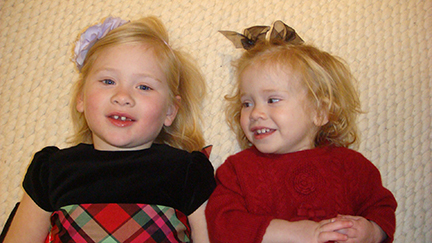
My parents then took me to the craniofacial department at the University of California San Francisco (UCSF) to have specialists there look at my mouth. I was diagnosed with ectodermal dysplasia after some genetic testing; my main marker being the absence of teeth. They didn’t know yet that I wouldn’t be able to sweat. At the time, the visits to UCSF made me feel special — everyone’s eyes were on me, doctors and students observing my teeth.
I was the only kid in elementary school terrified of losing a tooth.
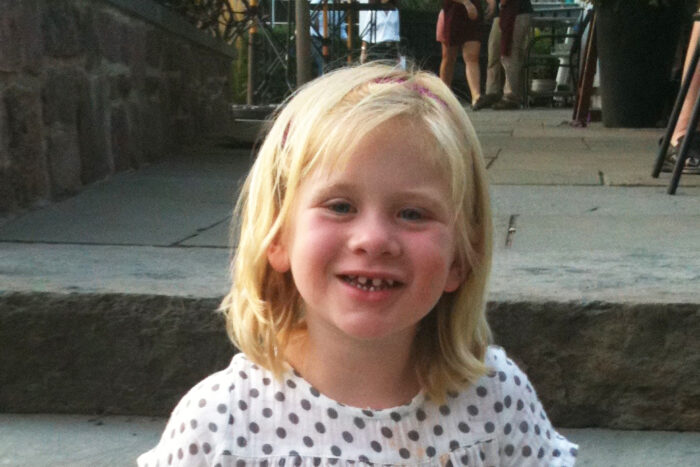
If I lost a tooth, then I would have a big hole in my mouth. When my teeth stopped coming in around the fifth grade, I had five top teeth and a retainer with teeth on it. My mouth felt empty, but this was all I had known.
I Welcomed Masks
In middle school, I became aware of myself and my looks, and I couldn’t help but feel embarrassed about the small pink retainer and cone-shaped teeth in my mouth. I stopped smiling with my teeth to hide my wires and chose to talk less so that nobody could hear the lisp from my retainer. I felt guilty for hating my mouth, but I just wanted to look like my other friends in school. The only thing the doctors could tell me was to be patient, to wait and see if a tooth seen on an x-ray would erupt. It never did.
They told me to wait to fix the bottom teeth (I had none in front). Their strategy was to wait until I was fully done growing, meaning I was supposed to wait until my twenties to be able to get implants. To me, this seemed like a lifetime away. No one seemed to understand the mental toll of having no teeth, of living in fear of a retainer breaking or that chewing every meal with one molar was becoming painful. This was not a sustainable long-term plan for a young girl with low self-esteem who yearned for normalcy.
Meanwhile, COVID happened, and I’m pretty sure I was the only 9th grader psyched to wear a mask.
Finally, I looked the same as everyone else. I went to a new school, and no one knew my secret.
Finally, A Treatment Plan
My parents made the decision to find a more progressive and compassionate approach. This was when it became clear that many dentists and practices lack the experience to treat ectodermal dysplasia. My mom joined one of the National Foundation for Ectodermal Dysplasias Facebook groups to see what others with ectodermal dysplasia had to say.
Many families recommended Ozark Prosthodontists in Arkansas. My mom spoke with them on the phone, and the moment she hung up she burst into tears. She exclaimed to me that these people were the kindest, most caring people she’d spoken to regarding my condition. A few months later, we were happy to take the two flights from San Francisco to Little Rock. The experience of hearing the actual plan for my surgery was surreal.
Ozark Prosthodontics is one of the NFED’s many Dental Treatment Centers. Discover if there is a center near you and how this program can help you.
My next visit to Arkansas, six months later (April 2023), would be for the first of several surgeries. The lead-up was stressful, but once I stepped foot in their office, my nerves dissipated. The care I received from the staff was phenomenal, and my recovery went really well. As my surgeon said, they “threw in the kitchen sink.” That is how extensive my bone grafting was.
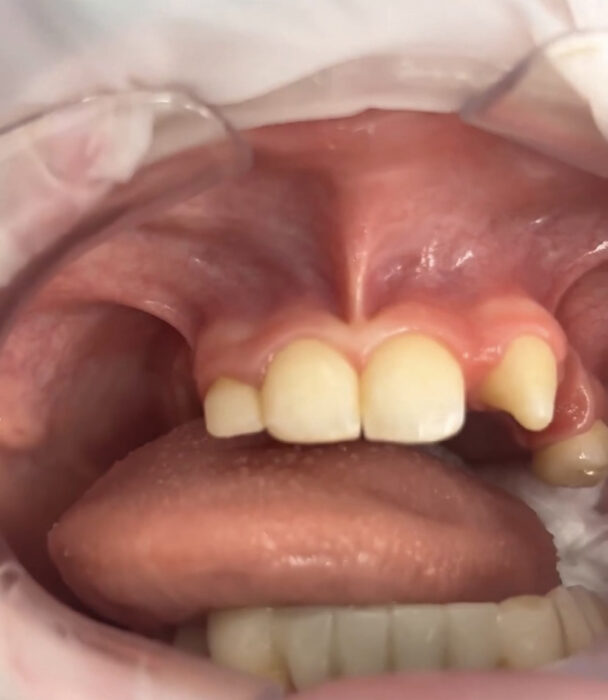
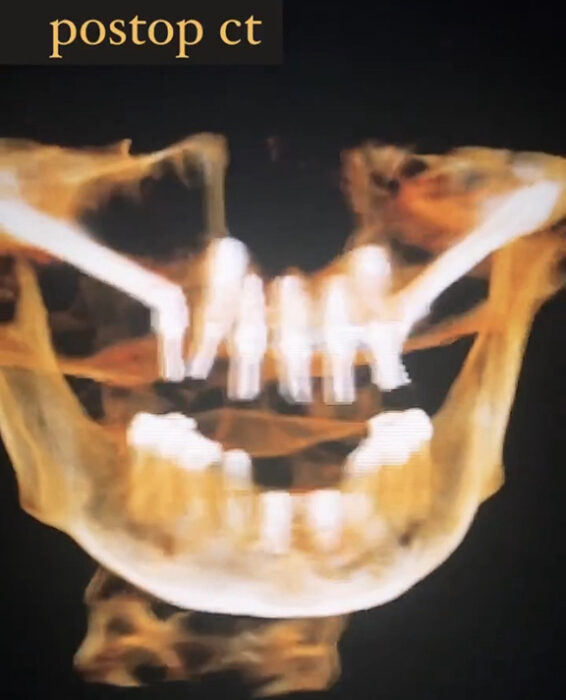
Because I didn’t have teeth to stimulate jaw bone growth, my bones were extremely thin, another reason the surgery needed to happen now rather than later. They placed implants in my cheekbones called zygomatic implants, and some behind my nose. I left the office with temporary teeth while the posts heal for six months.
How My Experience Has Inspired Me
I am so grateful for the care and support I’ve received from the people in my life. I don’t talk about my condition negatively much, and I believe this has allowed me to keep a positive outlook on my life and teeth. I see them as something I can learn from. This whole process inspired me to study health care policy, genetics, and data science. My experience was of a patient, not a parent struggling with insurance agencies trying to cover their child’s costly medical bills. My mom spent countless hours trying to get my care covered. She was ultimately successful after years of back and forth, denials and appeals, and phone calls.
I know this was a long and difficult process for both my parents, as it is rarely covered under medical insurance, despite it being a congenital anomaly. I want to help other families by advocating for the expansion of medical coverage, such as the passing of the Ensuring Lasting Smiles Act (ELSA). I plan to continue to advocate for this bill to be passed in the current Congress. I am passionate about other kids having the same access to insurance. My hope is that more families can also feel like there is a light at the end of their tunnels.
Stay Positive
As a 17-year-old looking back to my crestfallen middle school self, I wish I could tell her how much happier she would feel in just a few short years, and to stay positive. I have seen so much kindness and so much care, because I am surrounded with friends who don’t judge and adults who empathize. Living with a rare condition can be frustrating and lead to misunderstanding, but it can also present opportunities to educate other people, to learn how to stand up for yourself, and to advocate for something bigger than just you. I hope other kids with ectodermal dysplasia will feel hopeful by hearing my story.
- Finlay Jennings is a guest blogger for the NFED. She is affected by an unknown type of ectodermal dysplasia. She lives with her family in California.
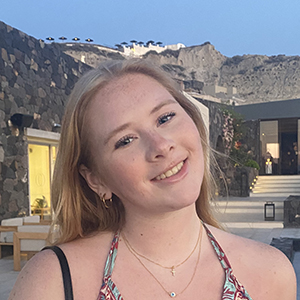
Finlay we are so happy that you found Ozark and Dr Sinada!!!
My daughter Erica, @erica.shinyteeth, had a great experience and I know you will too! The hard part is over. Your smile looks amazing!
I loved reading your story! My daughter Alyssa is 15 years old and dealing with the same issues. Currently she is in braces, waiting until she is fully grown to have her implants.
Thank you for sharing your honest and inspiring story. I’m sure many younger kids will find hope and see themselves in your words. So happy you were able to fill your smile. Our 17 year old daughter, Alli, can relate.
Finlays story sounds like my granddaughters story. She is 14 now, and she was so happy with the mask mandate. She wasn’t diagnosed until 2 years ago. When a dentist finally said she is missing 10 adult teeth. I started looking into different causes and came across NFED. I finally was able to convince her MD doctor to do genetic testing. Middle school is hard enough, but this condition makes it even harder for girls.
After her diagnosis many things started to fall into place.
Thank you for sharing your story Finlay it inspired me. You rock empowered young lady